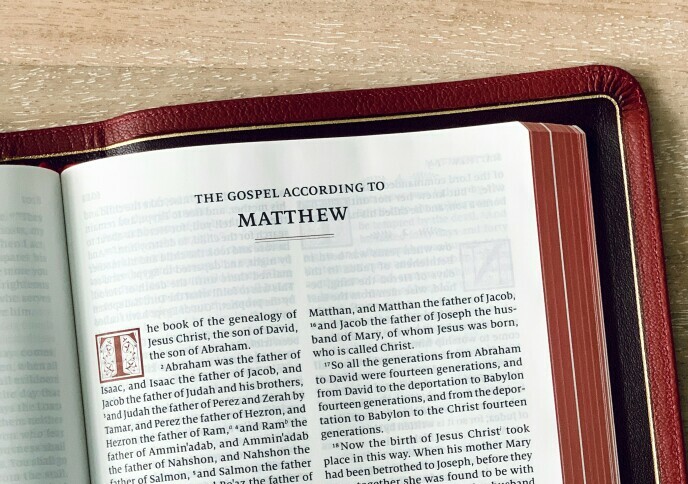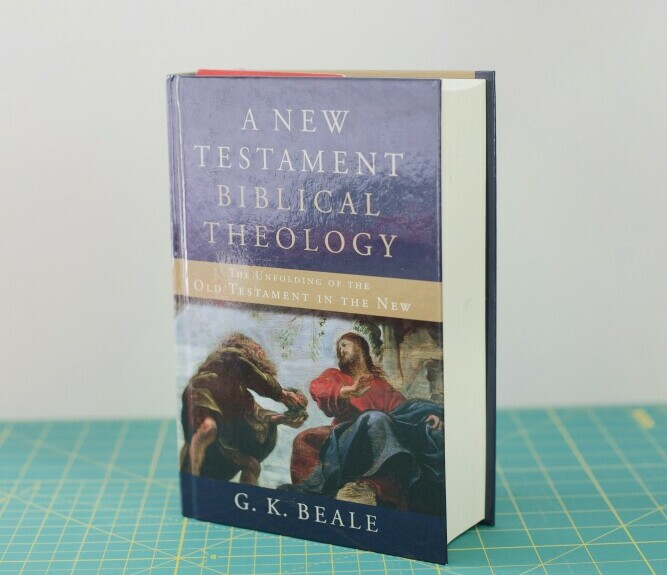The Gospel of Matthew – A Closer Look
The Gospel of Matthew is such a fascinating book in the Bible. The themes and teachings in Matthew’s Gospel really make you think. The Gospel is structured into five major discourses and narratives sections that really helps in understanding the overall message. This article guides you to take a closer look into the Gospel of Matthew to prepare you for a detailed study of the Gospel.

(The Gospel of Matthew: Image by Tim Wildsmith, unsplash.)
The Gospel of Matthew holds a place of high esteem as an integral part of the New Testament. It’s not just another book; for countless individuals, it serves as a portal to understanding the life and teachings of Jesus Christ. Its intricate weaving of narrative and discourse has significantly shaped Christian doctrine and practice.
Far more than just a historical account, Matthew’s Gospel invites its readers into a world where prophecy, teaching, and the moving events of Jesus’ life converge to offer a profound vision of who He was, and what that means for those who follow His path. There’s no denying its role in underpinning the theological structures that have been pivotal in guiding Christian thought for millennia.
To fully appreciate what Matthew’s Gospel brings to the table, we need to grasp the context in which it was written along with its narrative and thematic orchestration. As we get ready to dive deeper, keep in mind that we’re not just dissecting an ancient text; we’re uncovering layers of significance that have the power to inform and transform contemporary lives.
The Fabric of Matthew’s Narrative – Themes and Structures
The Gospel of Matthew offers a rich tapestry of themes and teachings that captivate both scholars and followers of Christianity alike. It’s organized in a distinctive way, featuring a range of narrative sections alongside five major discourses, all of which are crucial for understanding the gospel’s overall structure. These include;
- the Sermon on the Mount (Matthew 5-7),
- the missionary discourse (Matthew 10),
- the parables of the Kingdom (Matthew 13),
- the discourse on the Church (Matthew 16), and
- the final eschatological discourse (Matthew 24-25).
Diving further into these themes reveals Matthew’s intricate portrayal of Jesus as the promised Messiah. His authorship is heavily colored by the belief in Jesus fulfilling Old Testament prophecies.
Such deep-rooted connections emphasize the gospel’s appeal to a Jewish-Christian audience, linking Jesus’ teachings intricately with Jewish tradition while also heralding a new covenant.
Ethical teaching is another bedrock of Matthew’s message. Passages on charity, prayer, and fasting provide actionable guidelines for the faith community.
Moreover, the concept of discipleship is portrayed not just as following but as a transformational journey, embodying the principles Jesus preaches.
Matthew sets his portrayal of Jesus apart from other gospels by highlighting Jesus’ unparalleled authority and wisdom as an authoritative teacher.
The ‘Sermon on the Mount’ is a prime example, showcasing Jesus’ reinterpretation of the Law in a way that challenges and expands upon its traditional understanding. This wisdom literature positions Jesus not only as a savior but also as a moral beacon for his followers.
With each miracle and parable, Matthew builds upon this authoritative role, often contrasting Jesus’ teachings with the prevailing religious perspectives of the time.
Such contrasts aim to encourage readers to reflect on the deeper, often challenging implications of following Jesus, painting a picture of not just belief, but lived faith and practice.
In summary, the structure and themes of the Gospel of Matthew serve as a guide for understanding Jesus’ life and teachings. By providing clear, practical guidance on ethical living,
Matthew’s gospel resonates as a significant spiritual tool, bridging the ancient world with a message that’s still vital and transformative today.

(The Gospel of Matthew: Image by Scottish Person, pixabay.)
The Legacy of the Gospel of Matthew – Sustaining Faith Across Ages
As we conclude our in-depth look at the Gospel of Matthew, it’s clear that the import of this ancient text extends far beyond its historical and cultural origins.
With its rich theological insights, the Gospel of Matthew remains foundational to contemporary Christian belief and practice. Its detailed narratives and discourses present a Jesus who is both a fulfiller of ancient prophecies and a revolutionary teacher of new ways to understand and live out righteousness.
Matthew’s account does more than chronicle the life of Christ; it invites us to engage with its teachings on a deeper level. For Christians today, this Gospel offers a blueprint for discipleship. It challenges readers to emulate the compassion, humility, and wisdom of Jesus in their daily lives, continually pondering what it means to be a part of the Kingdom of Heaven.
In particular, the ethical demands presented in the Sermon on the Mount continue to inspire and provoke thought about the essence of moral conduct. Modern believers are called to grapple with questions of justice, mercy, and faithfulness, much like the early Christian communities for whom Matthew originally wrote.
The Gospel of Matthew has its own unique voice that complements the witness of Mark and Luke while also standing confidently in its theological assertions and literary style. This harmony within diversity is valuable not only for historical understanding but also for nurturing a more comprehensive view of Jesus’ life and ministry.

(Picture of the Holy Bible – A New Revised Standard Version: by stempow, pixabay)
Finally, whether through personal reflection, scholarly study, or communal worship, the Gospel of Matthew offers endless resources for those seeking to grow in their relationship with Jesus Christ and to live in a way that reflects the transformative power of the Gospel in the world. It’s important to stay open to further exploration and application of its profound lessons from the Gospel of Matthew.
In This Series: The New Testament Survey
- An Overview Of The New Testament
- The Historical Background Of The NT
- Key Themes In The NT
- The Structure Of The NT
- The Gospel Of Matthew – Taking A Closer Look
- Exploring The Gospel Of Mark
- The Unique Features Of The Gospel Of Luke
- The Theology Of The Gospel Of John
- Understanding The Acts Of The Apostles
- Paul – His Life, Ministry, And Epistles
- Understanding The Book Of Revelation




